Next Fashion Designer of Tokyo
2025
Announcing the contestants who passed the first screening
Inclusive Design Category
-
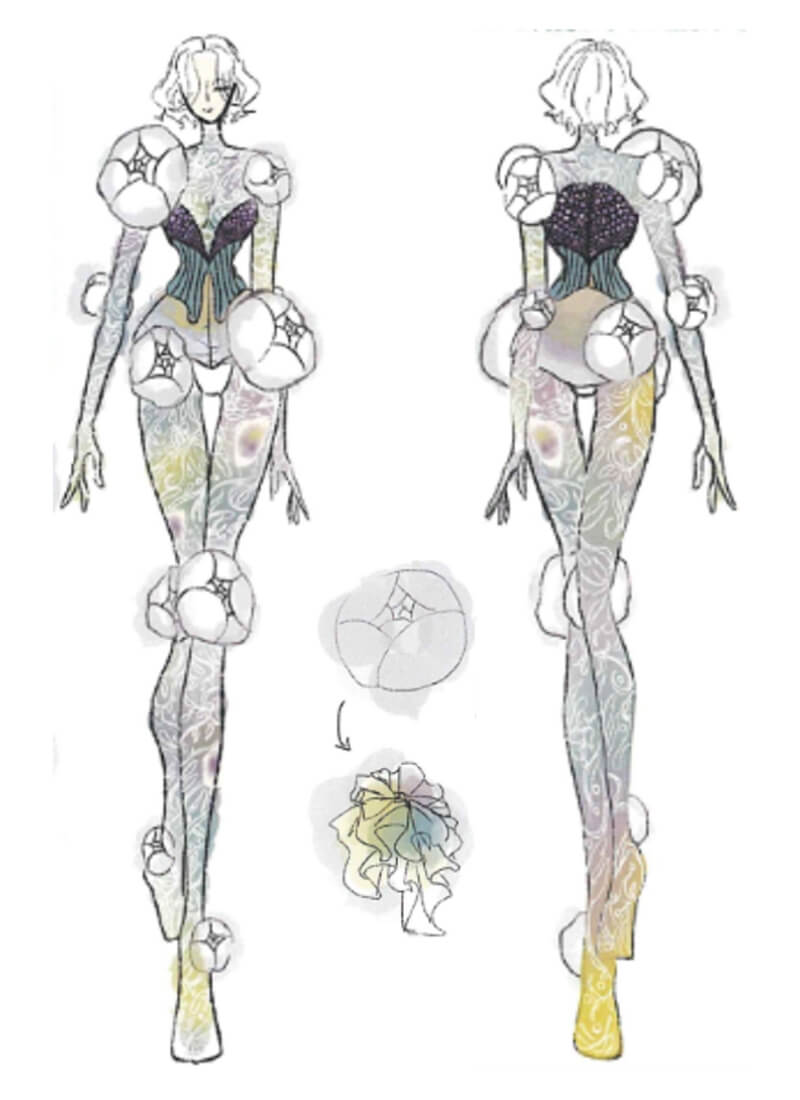
Professional Institute of International Fashion
天笠 晏里
Work name:Bruise
Concept
Bruises are typically something people want to hide or remove.
This design embraces bruises as part of fashion, incorporating cushioning into clothing to support both the mental and physical well-being of those prone to bumping into things, such as those with hemineglect.Features
- The vibrant palette of this design features colors that appear in bruises.
- Incorporates cut-outs at bruised areas, making them a part of the fashion statement.
- Cushions, inspired by floral motifs, are placed at joints that are particularly prone to impact.
-
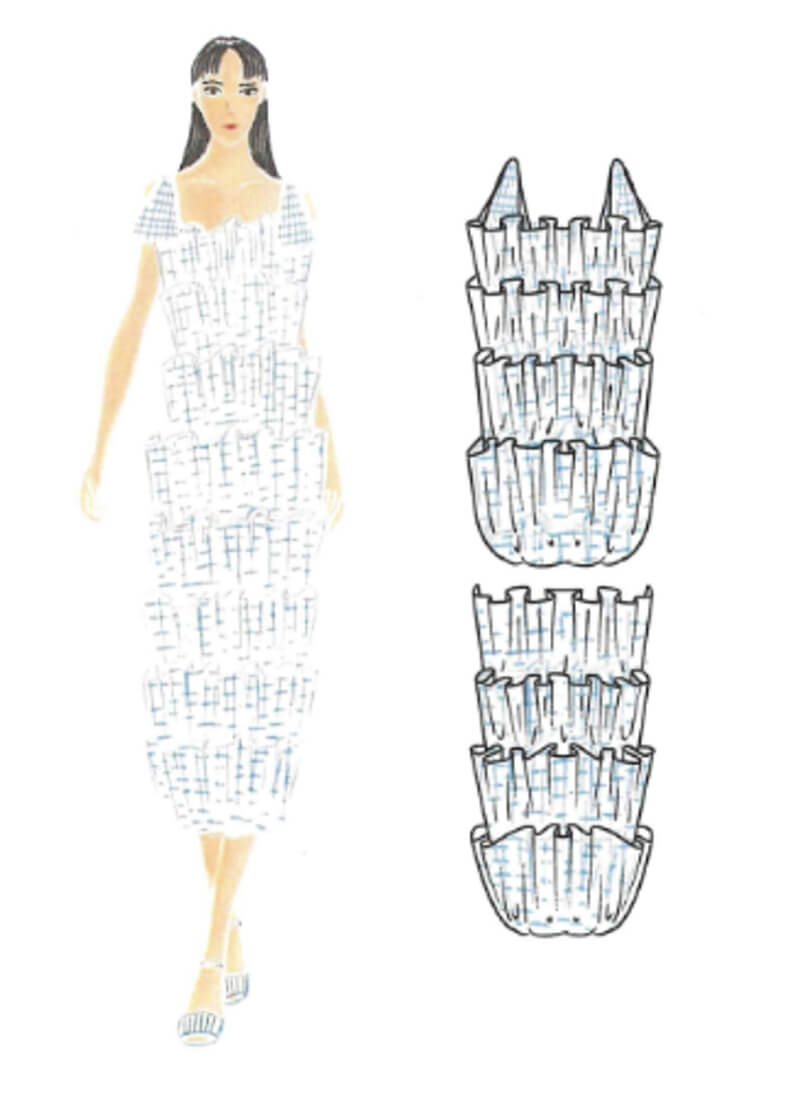
Esmod Tokyo
稲福 麗美
Work name:Rainy Day
Concept
Getting wet in the rain ≒ wearing the rain.
The inspiration comes from memories of rainy nights, creating a garment that feels like wearing rain.Features
- A design that features layers of shirring.
- Focus on stretchability to ensure a flexible fit to the body.
- Though it appears as a one-piece, the design consists of separate pieces.
-
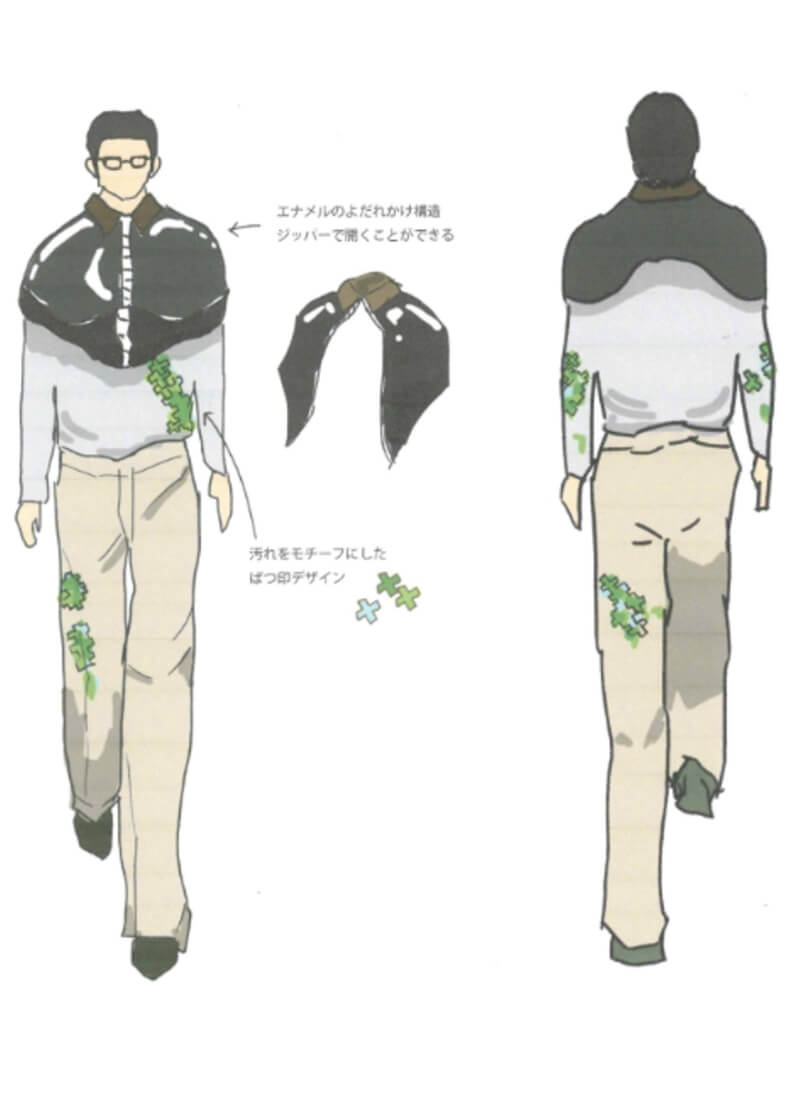
Meiji University / The University of Tokyo / Vantan Design Institute
Mina Kato & Masaya Kaneda
永田 莉紗・増田 凌
Work name:flexibib
Concept
For individuals with invisible disabilities such as intellectual or developmental disabilities, this design expresses the joy of choosing from a variety of textures and styles without worrying about stains.
It considers inclusive fashion that allows for "enjoying regular clothing," using a "bib" that protects against clothing stains and supports the wearers in enjoying their attire without concern for dirt.Features
- A large enamel bib with an original zipper can be transformed into a three-dimensional saucer-like structure to prevent stains during meals.
- When not in use, the bib can be unzipped to become inconspicuously flat.
- "X" marks, symbolizing stains, are added to the tops and bottoms as design elements.
-
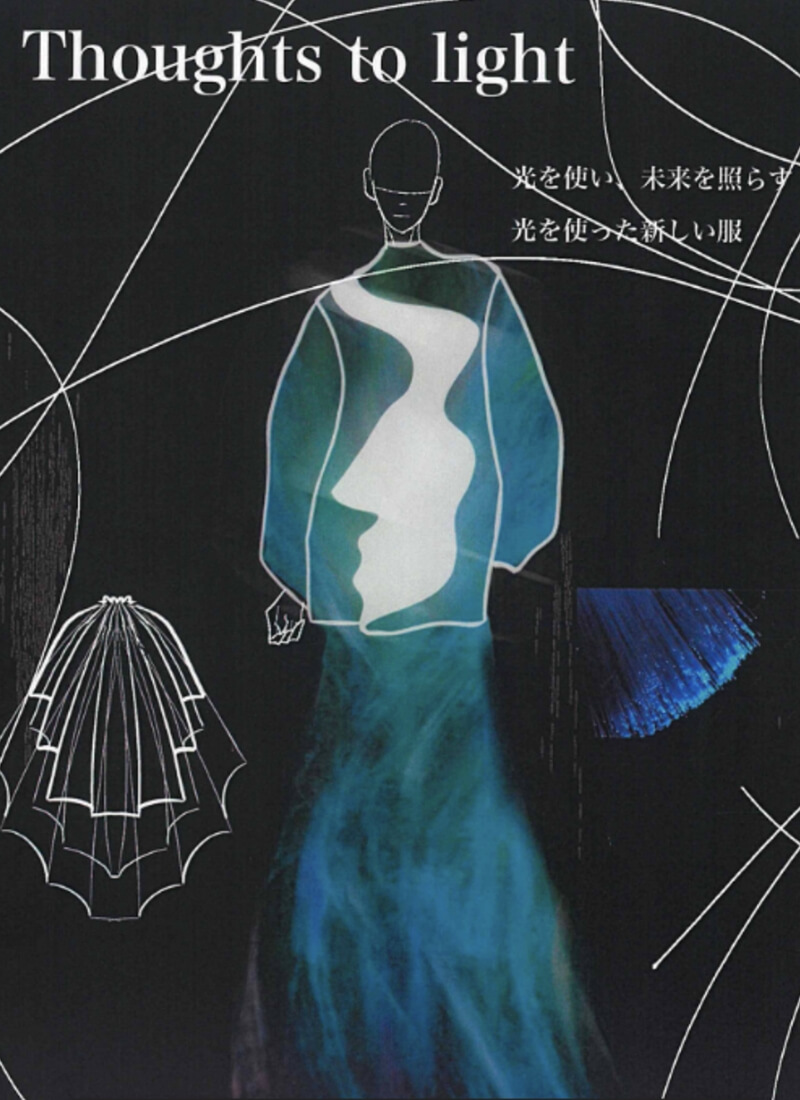
Tokyo Mode Gakuen
黒田 菜々子
Work name:Thoughts to light
Concept
Proposing clothing that expresses emotions, designed for individuals with ALS.
Connecting to the future by focusing attention on aspects often overlooked.Features
- Focuses on the use of light and color.
- Sustainability-conscious, uses recycled polyester.
-
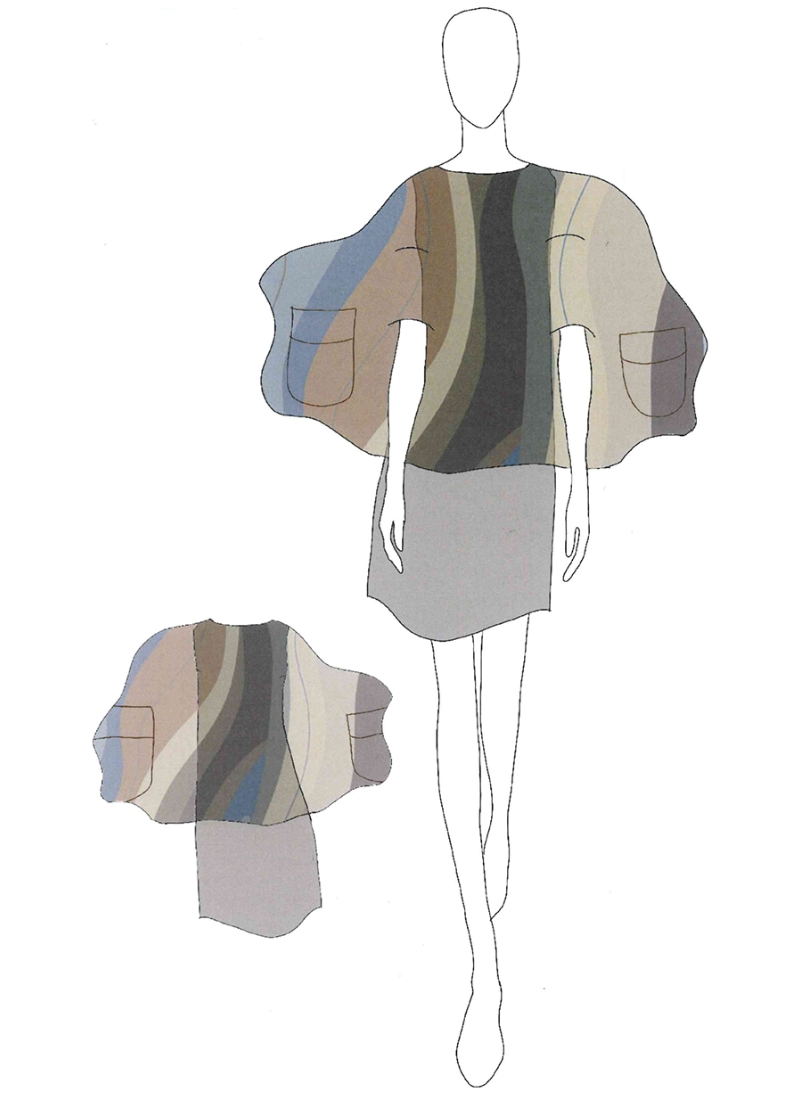
Tokyo Mode Gakuen
齋藤 夏那
Work name:Free
Concept
Eliminating the concepts of front, back, and center, allowing the wearer to decide how to position the clothing.
Features
- Multiple openings for arms to avoid sleeve stains even when using a wheelchair.
- No buttons or zippers, making it easy to put on and take off, with a design that lacks front, back, or center.
- Uses colors and patterns that make dirt less noticeable.
-
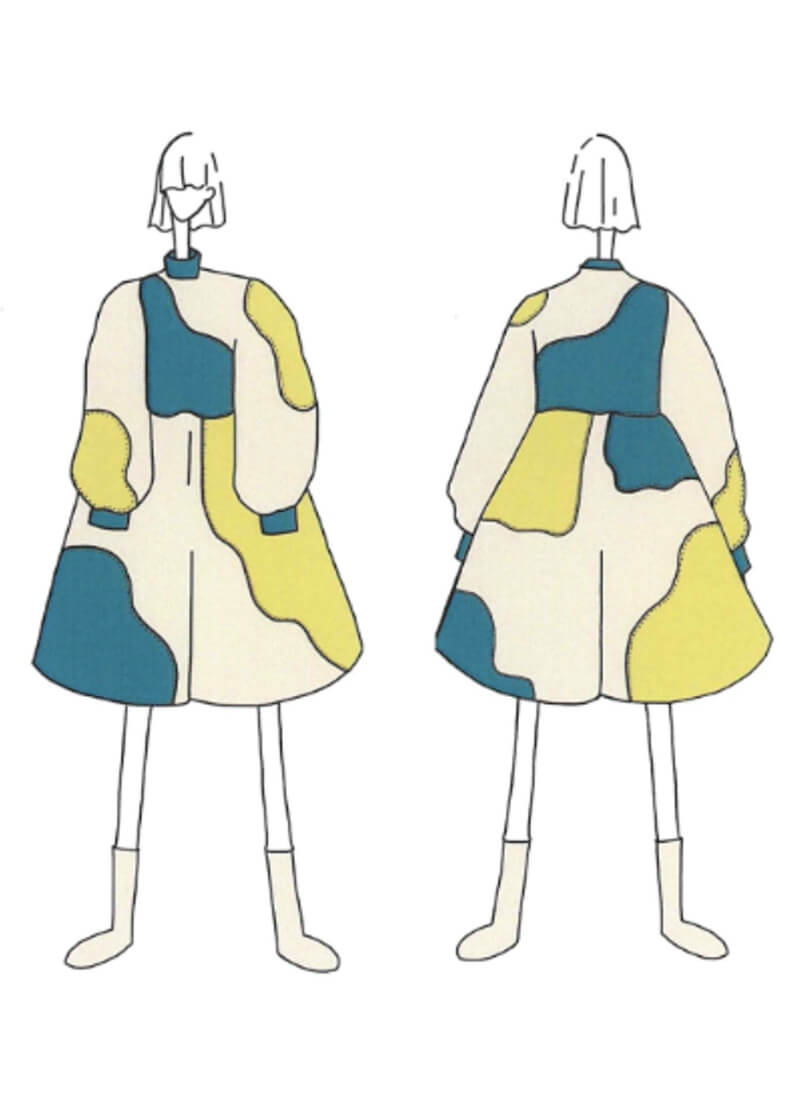
Japan Women's University
齋藤 花音
Work name:Anything in the Pocket
Concept
Clothing that allows you to freely put "anything" in it, from usual pocket items like smartphones and keys to your dog or hands while on a walk.
Features
- Inspired by my father, who has left-side paralysis due to an illness and walks with his hands in his hoodie or pants pockets.
- Designed with large pockets to accommodate various needs, such as making walking easier for people who find it convenient to place their hands in pockets, supporting arms after a fracture, functioning as a baby sling, or carrying a tired dog during a walk.
-
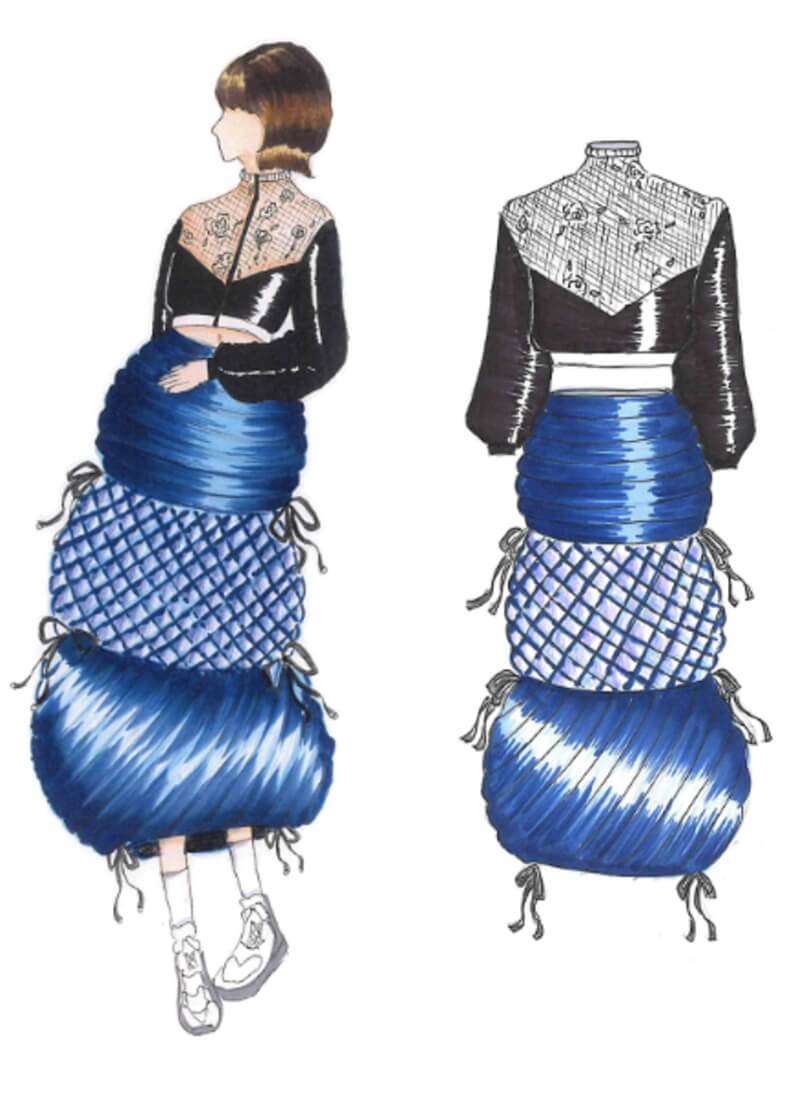
Sugino Fashion College
佐々木 千夏
Work name:Night Sea
Concept
A piece that conveys the night sky, lights, and waves reflecting on the sea.
Features
- Designed for individuals who have difficulty standing on one leg or dressing themselves independently.
- Can be folded like a paper lantern, it is easy to put on and take off just by stepping inside the circle of the skirt.
- The skirt expresses the night sky and the sparkling of the lights reflected on the night sea surface.
-
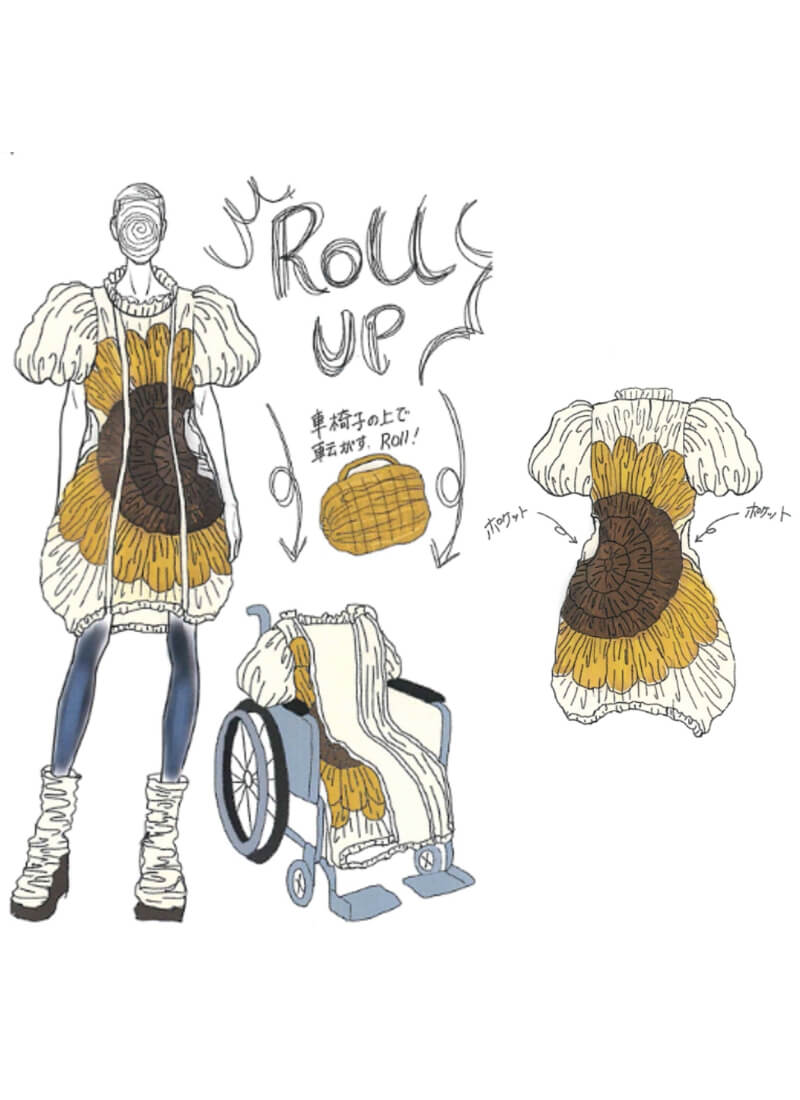
Tokyo Mode Gakuen
堤 ヒトミ
Work name:Roll up
Concept
The word "Roll Up" implies "inclusion," embodying the desire for people worldwide, regardless of physical barriers, race, or body type, to enjoy fashion.
Designed to be easily worn by wheelchair users independently, it is adaptable to various everyday scenarios.Features
- Originally comes in a small, round-shaped bag that can be unfolded over a wheelchair to allow easy dressing and undressing from the front.
- Easy to put on and take off, it is beneficial not only for wheelchair users but also during shopping.
- The design features gathers throughout that allow it to fit the body, accommodating weight and physical changes.
-
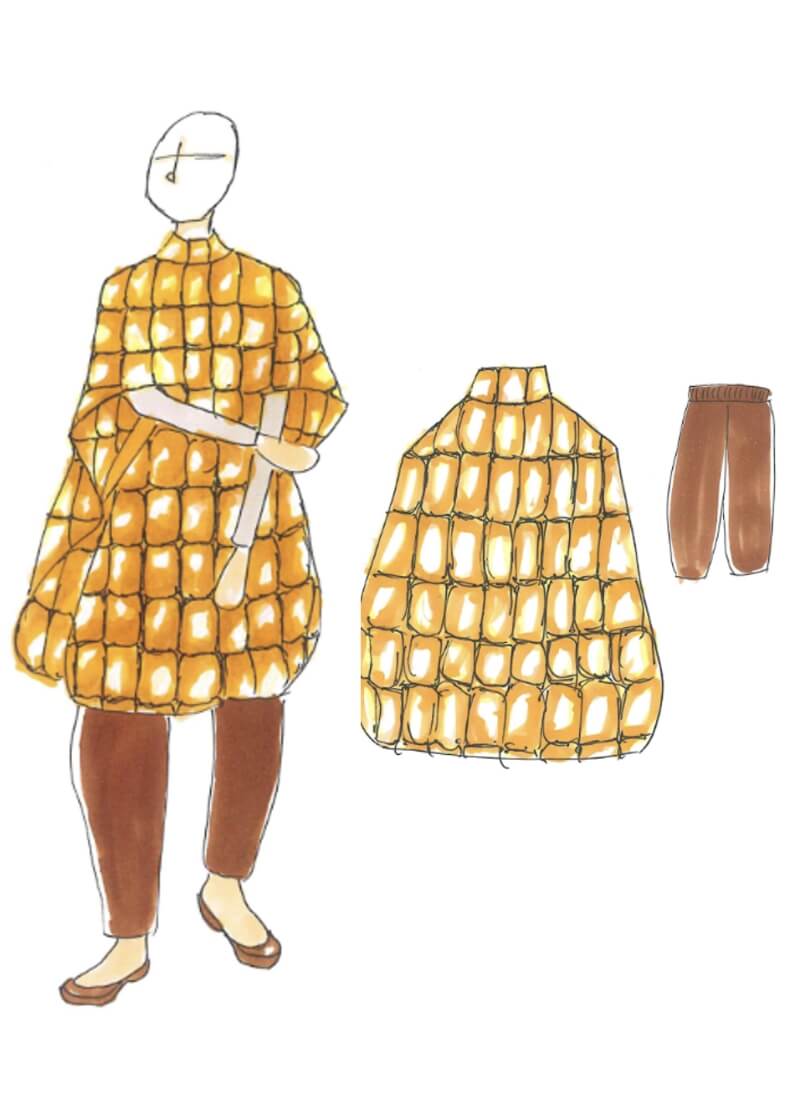
Sugino Fashion College
長谷川 真麻
Work name:A World Without Inside and Outside
Concept
In a world without inside and outside, clothing can be worn in any orientation.
Designed to be easily worn by individuals who often confuse sides of clothing, as well as those with visual impairments.Features
- Quilted fabric allows for warmth and comfortable wear, regardless of inside-out orientation, without being bulky.
- Pants are tailored with a flat-fell seam to create a silhouette without the front-back distinction.
-
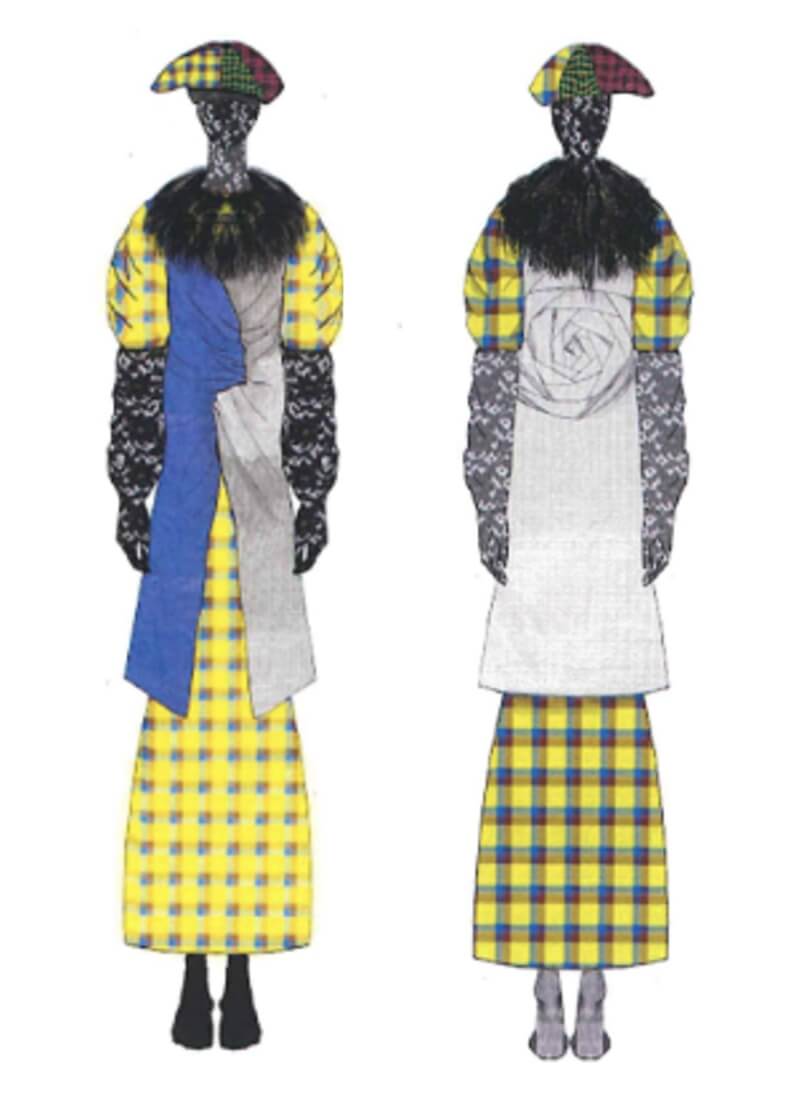
Mejiro Fashion & Art College
古川 元太
Work name:Breathing Check
Concept
Breathing Check.
Using thermochromism technology to create patterns that emerge based on changes in body temperature.Features
- Incorporates TR pattern technology to create an architectural design.
- Thermochromism assists individuals who are unable to regulate their body temperature by visually indicating their temperature.
- Inspired by a comment that "only able-bodied people can be fashionable," this design seeks to demonstrate that fashion is accessible to everyone.
-

Bunka Fashion College
正木 小春
Work name:Wrapping
Concept
Clothing that can be worn by simply pulling it over the head, without the use of zippers or buttons.
Features
- While omitting buttons and zippers typically results in a loose silhouette, the design incorporates elastic shirring to achieve a more fitted shape.
- Easy to put on and take off for individuals with limited hand mobility or visual impairments.
-
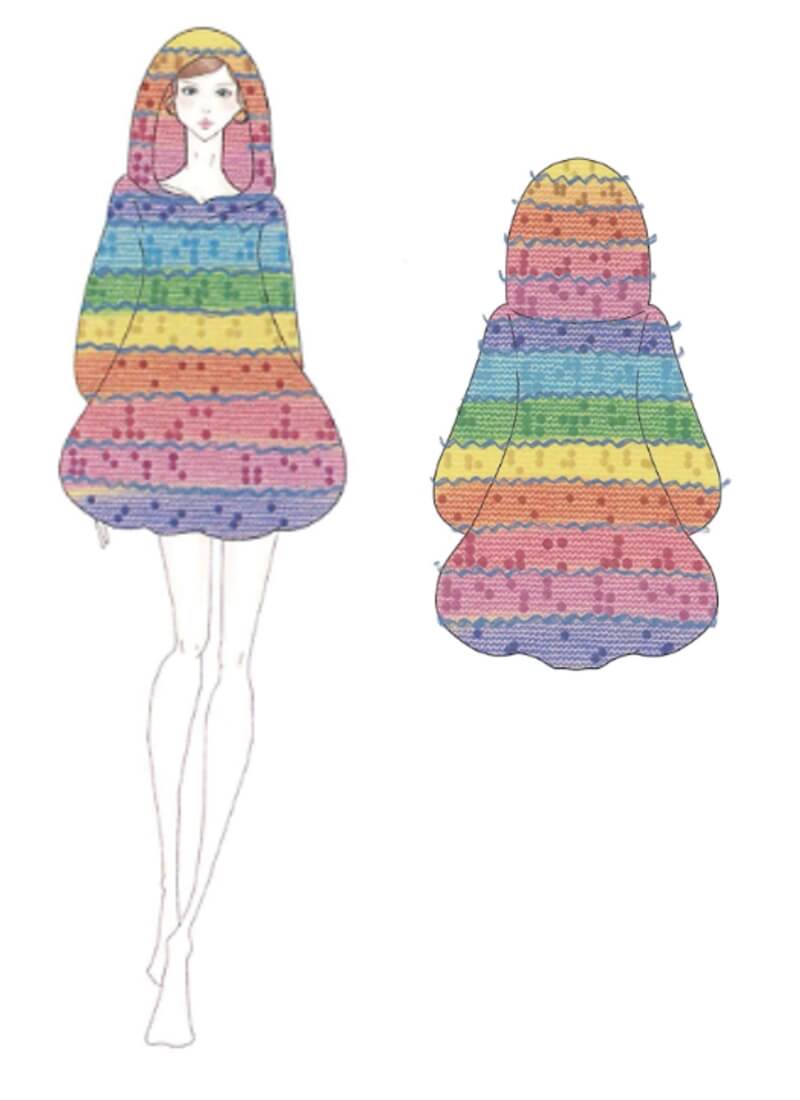
Tokyo Mode Gakuen
鞠子 涼香
Work name:Braille knit
Concept
Fashion that can be seen by the visually impaired.
Features
- A knit dress made using crochet techniques to mark colors in Braille.
- Designed in vibrant rainbow colors so that both visually impaired and sighted individuals can wear it fashionably.
- The hood makes it easier to distinguish the front and back of the garment.
-
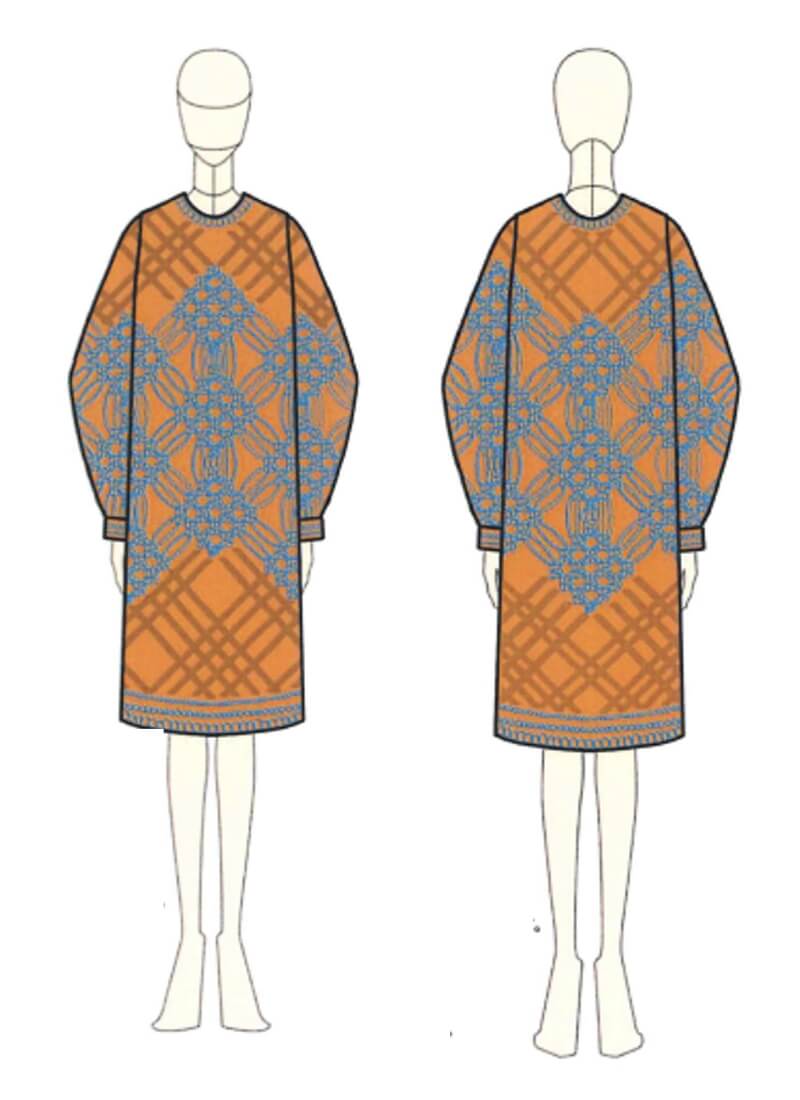
Tokyo Mode Gakuen
三浦 彩
Work name:Macramé x Patterns
Concept
Apparel designed for visually impaired individuals.
Proposing clothing with three-dimensional patterns created with macramé knitting that can be enjoyed through touching.Features
- Appeals to the sense of "touch," considering the heightening of other senses in visually impaired individuals.
- Different motifs are sewn onto the collar, cuffs, and hem, allowing wearers to recognize each part by touch, enabling them to dress independently without assistance.
-

Bunka Fashion College
皆川 空也
Work name:Choose
Concept
For individuals who require caregiving and experience limitations in their daily lives, having more options can provide a small sense of hope.
Listening to such voices, I aimed to make a difference through fashion by designing "clothing that offers choices."Features
- The design allows for various customizations.
- It includes drawstrings to allow the silhouette to be adjusted based on mood.
- The garment has a front opening with Velcro fasteners, making it easier for individuals with contractures to put on and take off.
-
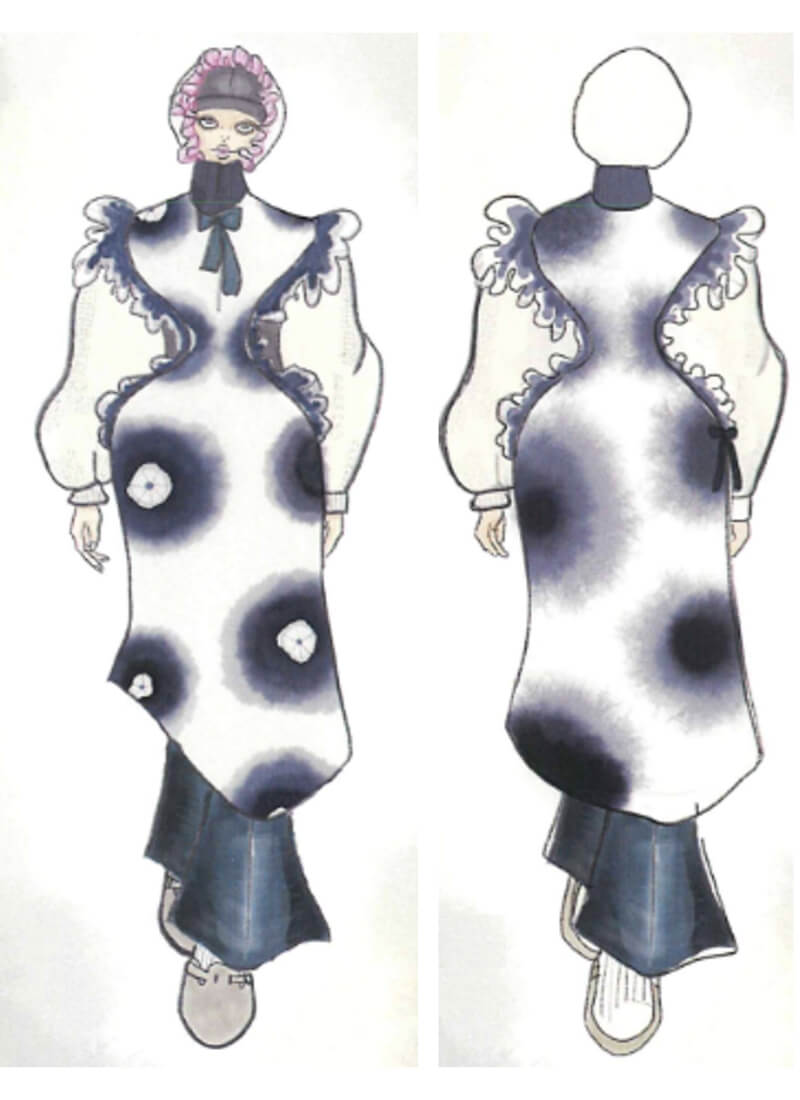
Digital Hollywood University Graduate School
矢野目 莉奈
Work name:Dye (Zen)
Concept
To dye the world into a place where one can be just as they are.
Features
- I collaborated with friends who have spina bifida and use a wheelchair to consider functionality.
- Responding to feedback that white clothing can get dirty from wheelchair use, the design includes removable sleeves.
- The design around the waist makes it difficult to see the shape of a diaper, also featuring a cover that looks like you are wearing denim.